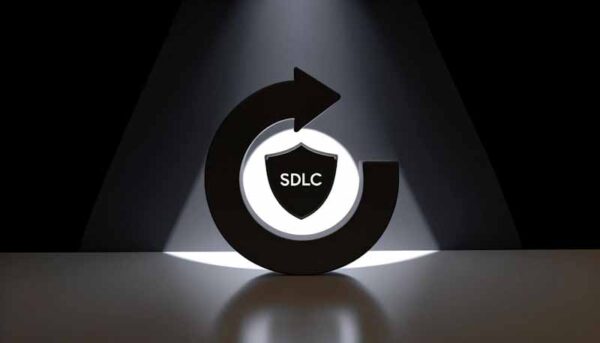Security integration is essential in today’s software development world to ensure the security and integrity of applications. Integrating this crucial element into the Software Development Life Cycle (SDLC) is not just a recommended practice. It’s a necessity for safeguarding against potential vulnerabilities. This blog explores effective strategies for incorporating security seamlessly into each phase of the SDLC, making it a fundamental part of your development process.
As businesses increasingly rely on software for their operations, consequently, the impact of security breaches also escalates. Embedding security from the beginning of the SDLC allows early identification and mitigation of risks, reducing costs and complexity associated with post-complexity security fixes.
Understanding SDLC Models for Better Security Integration
Recognizing different SDLC models is key to effectively integrating security measures tailored to each approach:
Waterfall Model: Security tasks are defined at each stage before moving to the next. Security requirements and assessments are critical in the early stages to prevent costly changes later.
Agile Model: Security is integrated into the iterative development process, allowing for continuous assessments and adjustments based on evolving requirements.
DevOps Model: This model emphasizes collaboration between development, operations, and security teams, enabling a continuous integration and deployment pipeline that incorporates security practices at every phase.
Spiral Model: This model combines elements of design and prototyping in stages. It is ideal for complex projects and highly sensitive to security risks. Each iteration allows for enhanced security risk analysis and mitigation strategies.
Choosing the Right SDLC Model
Selecting the appropriate SDLC model depends on several factors, including project requirements, team size, complexity, and the importance of security. Here’s how you can determine which model is best for you:
Project Size and Complexity: Larger, more complex projects might benefit from the structured approach of the Waterfall model or the risk management focus of the Spiral model. Smaller, more dynamic projects could leverage the flexibility of the Agile or DevOps models.
Risk Tolerance and Security Needs: Projects that require high levels of security, such as those in financial services or healthcare, may find the Spiral model more suitable because of its iterative risk analysis and management. Agile and DevOps models, with their quick iterations, also allow for frequent reassessment of security needs.
Team Dynamics and Expertise: Agile or DevOps might be the best fit if your team is experienced in rapid development and continuous integration. Teams more accustomed to a sequential process might lean towards Waterfall or Spiral.
Customer Involvement: Agile and DevOps models encourage ongoing customer feedback, ideal for projects where requirements are expected to change or evolve. The Waterfall model could be more appropriate if the project requirements are well-defined and unlikely to change.
Key Stages of SDLC and Security Integration Practices
Integrating security into each stage of the SDLC ensures that security measures grow along with the software. Below, we explore how to implement security at every step:
Planning
Security integration begins with thorough planning. This stage involves defining clear security goals and ensuring they are part of the project’s objectives. Engaging stakeholders early in setting these goals helps ensure the software complies with regulatory and industry standards.
Design
In the design phase, the focus shifts to developing a resilient architecture capable of thwarting security threats. Adopting design principles like the least privilege and defense in depth can lay a strong foundation for a secure application.
Implementation
Integrating security during implementation is critical. Developers should adhere to secure coding standards to prevent common vulnerabilities such as SQL injections and cross-site scripting (XSS). Techniques like regular code reviews and pair programming are valuable for maintaining stringent security standards.
Testing
Security testing should be a continuous effort involving both automated and manual methods. Techniques like Dynamic Application Security Testing (DAST) and Static Application Security Testing (SAST) are vital for detecting exploitable vulnerabilities.
Deployment
Ensure that security measures are robust when deploying software to protect it in its operational environment. This includes securing server configurations, using encryption for data transfers, and enforcing strong access controls.
Maintenance
After deployment, it’s crucial to update regularly and patch software to guard against emerging threats. Continuous monitoring and periodic security audits are key to sustaining the security and integrity of the application over its lifespan.
Further Reading
SANS Institute: Integrating Security Into the SDLC– A detailed guide by the SANS Institute on how to integrate security into the SDLC, providing comprehensive insights into secure coding and development processes.
CISCO Secure Development Lifecycle– Cisco’s official page on their Secure Development Lifecycle offers insights into the frameworks and practices used to enhance software security.
IBM’s Practices for Secure Engineering– IBM offers insights and best practices on secure engineering, supporting enhanced security measures throughout the development process.




